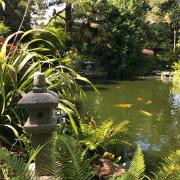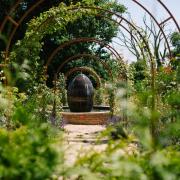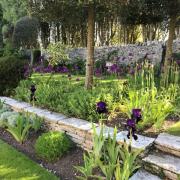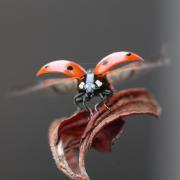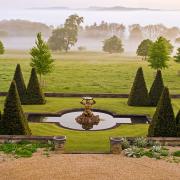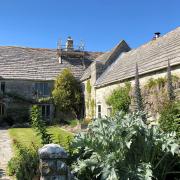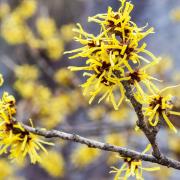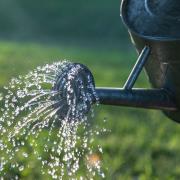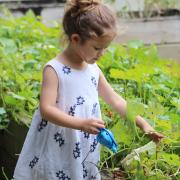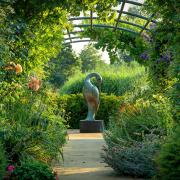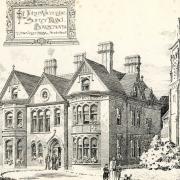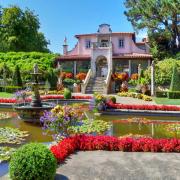Dorset is home to some of the rarest species in the UK but with the threat of extinction ever present, bumblebees need help. As Rosemary Free, of the Bumblebee Conservation Trust, explains we can all help these vital pollinators

Bumblebees are an essential part of the countryside, responsible for pollinating our crops and wildflowers. Without bumblebees, fruits such as tomatoes, apples and strawberries would simply cease to exist.
In the past 80 years, two species have become extinct in the UK and of the 24 species remaining, several are now extremely rare. Among the scarcest species, the Brown-banded Carder, the Moss Carder and the Red-shanked Carder bee can all be found in Dorset.
Two of the country’s six cuckoo bumblebee species – the Red-tailed and the Forest cuckoo bumblebee – have also been recorded here. In addition, Dorset was the first point of arrival for one of our most recently-colonising bumblebees: the Tree bumblebee.
“Dorset is a great county for bees - the sheer quantity of high-quality grassland and heath means it’s a real hotspot,” says Richard Comont, Data Monitoring Officer for the Bumblebee Conservation Trust (BBCT).
The trust, which was set up to address concerns about the plight of this much-loved insect, is now calling on gardeners to play their part by creating bee-friendly havens. Summer is when bumblebee workers stock up on pollen and nectar to feed the young bees in their growing colony. A plentiful supply of flowers increases the likelihood of a colony producing a new generation of bumblebees in the autumn months.
“Gardens can be a great resource for bumblebees - the bees need flowers from March to October, and increasingly gardens are the only places they can find enough to keep going,” says Richard. “Wildlife-friendly gardening is often portrayed as untidy and nettle-filled. But bumblebees’ main need is for flowers - nectar and pollen will keep them buzzing all summer.”
However, before you head for your nearest garden centre it is important to remember that not all flowers are suitable for bumblebees. Plants like pansies and double begonias don’t offer much for bumblebees and other pollinators because they produce little or no pollen and nectar. Others, like petunias or impatiens (Busy Lizzies), have flower shapes that bumblebees cannot access – either because the petals form tunnels which are too long or narrow to feed from or because they have multiple tightly packed heads.
Instead opt for bee-friendly plants such as globe thistle, which is a great source of nectar and can grow in poor soil conditions, small-flowered varieties of sweet peas which offer lovely colours and scent while being accessible to bumblebees and aquilegia, a favourite with long-tongued species such as the garden bumblebee.
Other popular blooms for early summer are allium - which can grow in almost any type of soil - borage, which provides both nectar for bumblebees and edible flowers for the gardener, and thyme.
The greater the number of suitable flowering plants in your garden the better, but as a rule of thumb, you should aim for at least two kinds of bee-friendly plant for each season.
In early spring, when bumblebees are emerging from hibernation, flowers and plants such as crocus, pussy willow and native bluebells will provide food for the queens so they can establish a nest and raise their first young.
Late summer is when the bumblebee nests produce new queens. It takes a lot of food to make a single queen and the ideal plants to have in bloom at this time include peas and beans, honeysuckle, dahlias and fuchsia. Herb gardens with plants such as mint (including catmint), rosemary ,thyme chives, fennel, lemon balm and lavender are also fantastic for bees.
To find out how bee-friendly your garden is, try the Bee Kind tool on the BBCT website (beekind.bumblebeeconservation.org). This will give you a score on the flowers already in your garden and advice on what else to plant.
--------------------------------------------------
Become a BeeWalker
The Bumblebee Conservation Trust (BBCT) is calling on people to help monitor these much-loved pollinators as part of a national census. The government is currently drawing up a National Pollinator Strategy for England and the information collected by volunteer ‘BeeWalkers’ will contribute towards this by building a more accurate picture about bumblebee populations.
Anyone can become a BeeWalker – all you need is a spare hour or so every month to walk a fixed route of around a mile and send BBCT your findings. You can choose your own route or try some of the popular areas for BeeWalks such as Moors Valley Country Park in east Dorset and the Studland peninsula near Swanage. A good place to see some of the rarer bees is Hengistbury Head, a local nature reserve which is owned and managed by Bournemouth Borough Council.
Jo Taylor, a safety and environment supervisor from Alum Chine, Bournemouth, has been doing BeeWalks for four years. “My BeeWalk is on the Studland Peninsula, so it’s great for sea meadows and hedges,” she says. “I see a mixture of common bees such as the Buff-tailed, White-tailed, Common Carder and Red-tailed bumblebees. Occasionally I also see a Tree and Heath bumblebee and, towards the end of the season, three different cuckoo species.”
For more information about how to get involved visit: bumblebeeconservation.org/get-involved/surveys/beewalk.
--------------------------------------------------
KNOW YOUR DORSET BUMBLEBEES
Tree Bumblebee
Queens, workers and males all have a black head, brown-ginger thorax and black abdomen with a white tail. The proportion of white on the tail varies significantly but is always present. It prefers to nest above ground, often inhabiting bird boxes.
Red-tailed Bumblebee
Queens and workers have a distinctive black body with an orange-red tail. Males have yellow facial hairs and a yellow band on the thorax with a black abdomen and a bright orange-red tail. The hairs on the pollen baskets (on the hind legs) of the females are black, but these may be red in males. It is very similar to the much rarer Red-shanked carder bee but the hairs on the pollen baskets of females of the latter species are red.
Brown-banded Carder Bee
Queens, workers and males have a ginger thorax with a few black hairs that are visible on close examination. These black hairs are usually close to the wing bases. The abdomen is pale yellow, but usually has a faint band of slightly darker hair on the second segment. It’s very similar to the Common carder bee which is found in most gardens.
--------------------------------------------------
BeeWatch
If you need help with identifying the bees you see on a BeeWalk, or even just in your garden, you can photograph your mystery species and upload it to the Bumblebee Conservation Trust website. There you will find a special BeeWatch tool to help identify the bumblebee in your photo. Once your photo has been verified by one of our experts we will email you to let you know just how good your bumblebee ID skills are. BeeWatch also gives you the opportunity to help identify other people’s photos, which is a great way to improve your own ID skills.
For more details visits bumblebeeconservation.org/get-involved/surveys/beewatch--------------------------------------------------
Read on
Share your bumblebee pictures*VIDEO* Stone Curlew spotted in Portland BillA blossoming future for the flower-rich meadow at Toller Porcorum




